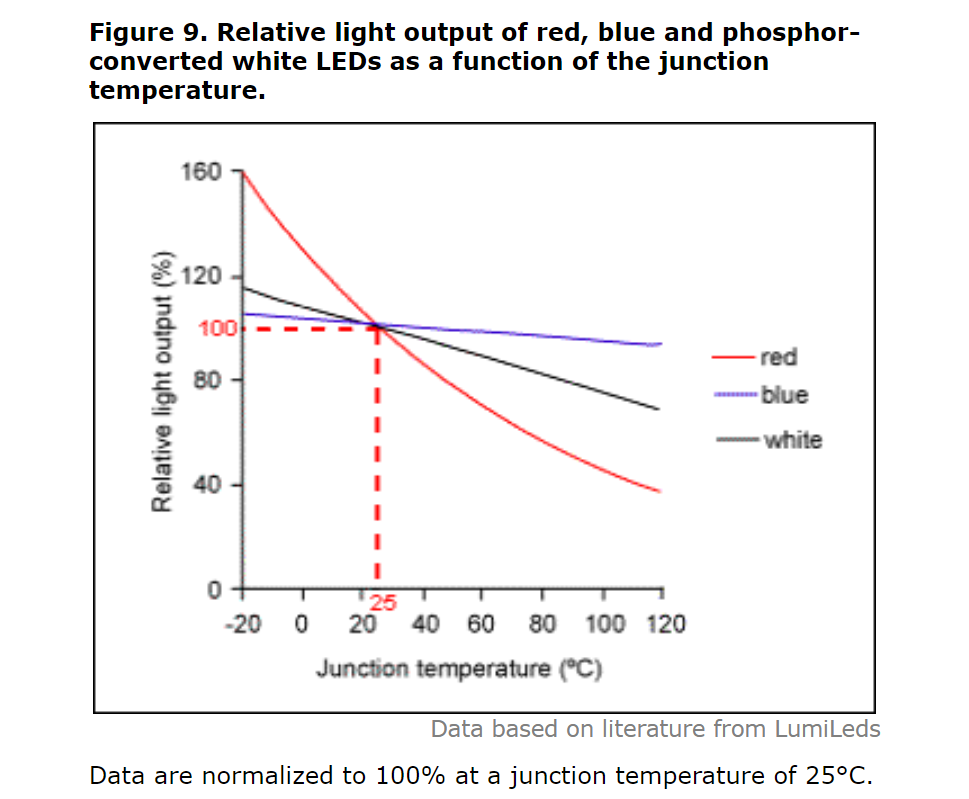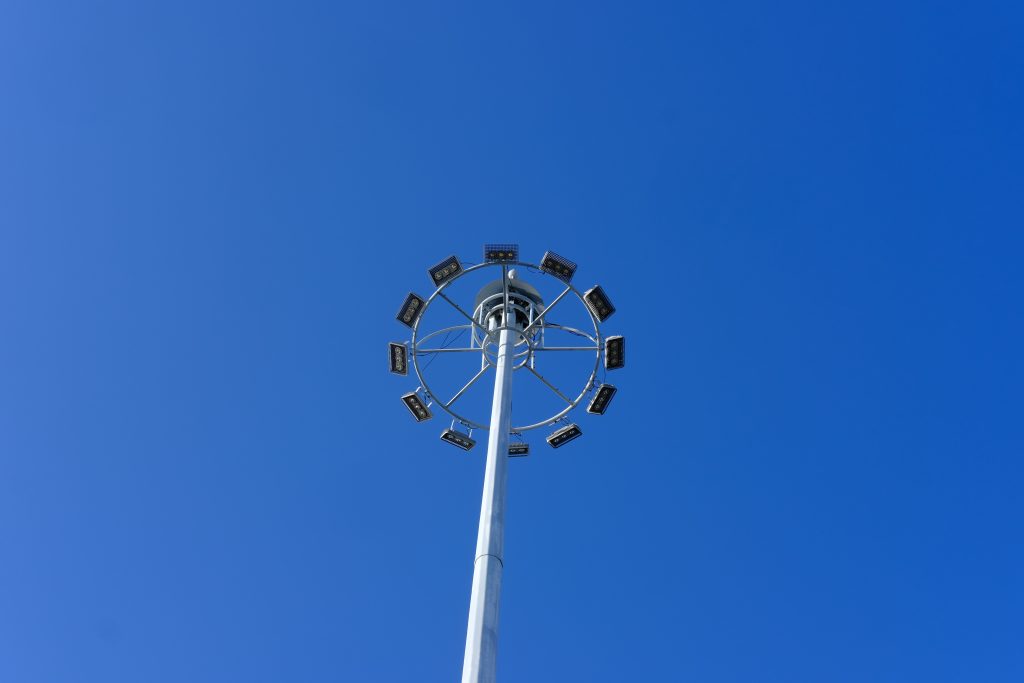Many industries require high temperature facilities to produce or process, creating various hazards out of necessity. While there will always be a certain amount of risk required for these industrial processes, this doesn’t mean we can’t work on ways to reduce this risk to a minimum. Although it may not be immediately obvious, the use of LEDs can help this driver minimize the risk.
1.What are High Temperature Facilities?
While it might seem like an obvious question, it is easy to underestimate just how hot certain industries can be. Some facilities such as steel mills require extreme temperatures to process these metals. Iron (the element used to make steel) has a melting point of 2750°F, so smelting iron to create steel and then casting it in molds requires extremely high temperatures.
Any foundry will need high temperatures, as do power generation facilities such as nuclear power plants. There are also less obvious high temperature facilities such as chemical processing plants. Oil needs temperatures exceeding 1000°F to refine its crude state, but even seemingly innocuous places such as industrial food production can generate a lot of heat.
2. How are LED lights affected by high temperature?
In general, the cooler the environment, the higher an LED’s light output will be. Higher temperatures generally reduce light output. In warmer environments and at higher currents, the temperature of the semiconducting element increases.
The light output of an LED for a constant current varies as a function of its junction temperature. Figure 9 shows the light output of several LEDs as a function of junction temperature. The temperature dependence is much less for InGaN LEDs (e.g., blue, green, white) than for AlGaInP LEDs (e.g., red and yellow).
Some system manufacturers include a compensation circuit that adjusts the current through the LED to maintain constant light output for various ambient temperatures. This can result in overdriving LEDs in some systems during extended periods of high ambient temperature, potentially shortening their useful life.
Most LED manufacturers publish curves similar to those in Figure 9 for their products, and the precise relationships for various products will be different. It is important to note that many of these graphs show light output as a function of junction temperature and not ambient temperature. An LED operating in an ambient environment at normal room temperature (between 20°C and 25°C) and at manufacturer-recommended currents can have much higher junction temperatures, such as 60°C to 80°C. Junction temperature is a function of:
a. ambient temperature
b. current through the LED
c. amount of heat sinking material in and around the LED
Generally, the lighting specifier does not need to be aware of these relationships; the maker of an LED lighting system should incorporate appropriate heat sinking and other compensatory mechanisms. The system manufacturer should then provide a range of permissible operating temperatures within which acceptable operation will be expected.
Prolonged heat can significantly shorten the useful life of many LED systems. Higher ambient temperature leads to higher junction temperatures, which can increase the degradation rate of the LED junction element, possibly causing the light output of an LED to irreversibly decrease over the long term at a faster rate than at lower temperatures.Controlling the temperature of an LED is, therefore, one of the most important aspects of optimum performance of LED systems.
These high temperature processes mean that the ambient temperature will increase. In order for humans to work in these facilities without being adversely affected, the environment needs to be carefully controlled. Some factories will be equipped with large-scale ventilation equipment, industrial cooling equipment, and even use outdoor heat to radiate heat.All items in the facility will increase or decrease the temperature, and even lower the worker’s own body temperature. Lighting also increases heat.
High intensity discharge bulbs such as metal halide or high pressure sodium lamps require a lot of electrical energy just to start them. This is why they use ballasts to control the electrical flow required to ignite the arc between electrodes. This arc is what creates the light in the bulb.
Unfortunately, a lot of this electrical energy is also converted into heat energy. With industrial HIDs, the large bulbs emit a lot of heat energy per bulb. Multiply this by the vast amount of bulbs required to sufficiently light these indoor commercial properties and they add considerably more heat to an already roasted environment. This extra heat puts more pressure on cooling systems to maintain workable ambient temperatures.
3.Why LED Lighting is better than other lights?
LED lighting is up to 80% more energy efficient than HIDs and other more traditional lighting products. This means you get the same amount and quality of light using much less energy. Not only this, but minimal energy is wasted as a heat by-product.
The less heat added to the ambient temperature, the less strain it puts on temperature regulators and the less energy you use for these devices.
Another reason LED lighting is beneficial for high temperature environments is due to its fixture requirements. To house the gas and electrodes needed for HIDs to function, the lamps are encased in reinforced glass. This limits the directional ability of the light and provides a safety hazard.
LED lighting can be used in reinforced casings which don’t need as much space to function. This means you can concentrate a lot of light and keep it behind safer fixtures. You can keep them higher up and away from heat sources and still maintain the same quality of heat. Also, programming and motions sensors mean the amount of energy being used at any one time can be more carefully maintained than lighting which is too outdated for this technology.
4.Where are high-temperature lights usually used?
Steel, paper, glass factories, and other manufacturing hot mills often experience severe temperature fluctuations and require industrial lighting solutions with extremely high operating temperatures. It is difficult to find a solution because the driver starts to malfunction in a high-temperature environment. The lights cannot be used for a long time, and the hot rolling mill is faced with the challenges of expensive replacement lighting and hidden safety hazards due to lighting failures.
Some of the environments that high operating temperatures occur are in furnace rooms, dryer hoods, ladle cranes and cooling beds.
Furnace Rooms: The furnace in steel plants or glass plants is where they heat the ingredients to make steel or glass, usually inside of the ladle. This can be new steel/glass or recycled steel being melted down. Temperatures can reach up to +1500°C where the steel is being melted.
Dryer Hoods: Dryer hoods can be found in paper plants where they use high temperatures to dry out the newly created wet paper. Once dry, the paper will eventually be rolled into large rolls for shipping. Temperatures in this area can reach up to +85-100°C.
Ladle Cranes: In steel plants or glass plants, a ladle crane is a crane that carries the ladle filled with newly made molten steel or glass over to where the molten can be poured into moulds. Temperatures in this area can reach up to +500°C for short periods.
Cooling Beds: A cooling bed is an area where hot steel or glass air-cools in a steel or glass plant. The steel coils, slabs, and bars need to cool for several hours or days before they can be loaded for shipping. Temperatures in this area can reach up to +85-100°C.








